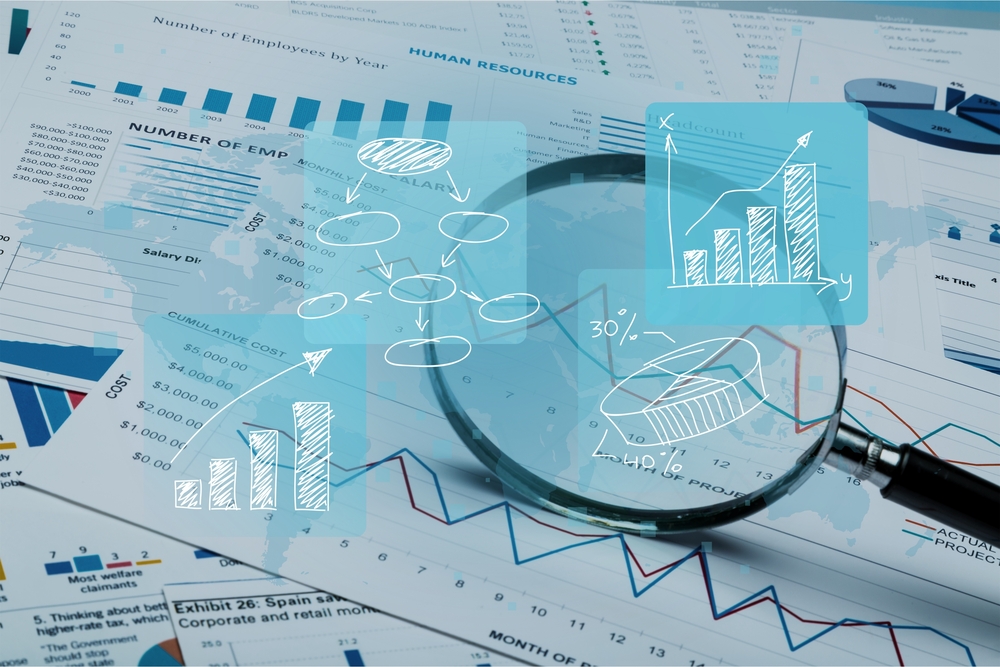If you look at John Mohr’s LinkedIn profile, you will see he says, “Let’s solve hard problems and change the world.” What a great thought! If 2020 was about surviving, and 2021 was about adapting, perhaps 2022 can be about changing. All this leads me to suggest that a conversation about your organizational dashboard could help change the world.
Wait, what? I will elaborate.
We Want a Dashboard!
I am willing to bet that you have been approached more than once by someone who asks for an organizational dashboard. The conversation goes something like this:
Them: We need a dashboard!
You (suppressing an eye-roll): Great! What data would you like to see on the dashboard?
Them (checking their watch): Sorry, I have another appointment to get to.
I love organizational dashboards. They present a lot of information in a small space. Organizational dashboards help data come alive for the viewer. They are not boring.
Organizational dashboards are also hard to get right.
- What is the right data to show? If you show all the data available, you quickly have more than one organizational dashboard.
- To know the critical data to show in an organizational dashboard, you must understand what you are trying to measure or manage, and why. What is the organization trying to attend to? How does seeing this data change my priorities?
- Perhaps the key point is that you must understand how the organization works. Most folks do not understand this. They know what they do. And they know what their group or department does. But they are less clear on how their work slots in with the work of others. And unless you are creating a departmental dashboard, you need to know this.
I want to describe organizational dashboards for three different kinds of organizations. Feel free to steal this when that person asks you to “come up with something” at the end of your organizational dashboard conversation. And if you have a desire to change the world, be sure to read to the end.
A Profit-Making Organizational Dashboard
I will describe a profit-making organization as one that tries to show some retained earnings at the end of the period. Think, Coca-Cola or your dentist. It could also be a non-profit organization that reinvests all its retained earnings. Think, the Red Cross. What are some of the key elements of an organizational dashboard here?
How are We Doing?
How are we doing as an organization? Some dashboard elements might include:
- Revenues
- Costs
- Market share
- Projected earnings per share
What is Driving Our Performance?
Data in this bucket is of the “why” variety. Why are sales going up (or down)? How are employees feeling? What about customer satisfaction? Here are some potential organizational dashboard elements:
- Sales pipeline
- Average days to close a deal
- Deal size
- Revenues per employee
- Employee turnover
- Customer satisfaction
- Social media sentiment analysis
What is Out There That Could Affect the Organization?
This part of the organizational dashboard is about asteroids. OK, not exactly. But an organization is not usually doing well if they are saying, “Wow, we did not see that coming!” What are the events or tidal forces that could open new opportunities? Or put the organization out of business? Here the elements will be more specific to the company, its industry, and the markets it serves. Coca-Cola might be watching:
- Beverage consumption by beverage type and age group
- Development and commercialization of alternatives to core products (is there an “Impossible Cola” out there?
- Changes in how beverages are distributed
- Regulation of sugary drinks in schools
A Non-Profit Organizational Dashboard
What about a non-profit? Its organizational dashboard will be like a for-profit organization. Sales elements will be replaced by grants (dollar volume, average grant size, grant term, etc.)
Performance elements will focus on services delivered (how many books have been distributed, how many pro bono clients have been served).
Strategic elements will focus on changes in the population served, changes in the funding landscape, etc. Has the pandemic created new needs for the populations we serve? Are funder priorities shifting toward smaller organizations closer to the need?
What Would a Philanthropy’s Organizational Dashboard Look Like?
What about a philanthropy? If it is a community foundation, there will be organizational dashboard elements relating to donors: how many, how many new ones, donation size, trends, etc.
The grantmaking side of the philanthropy is where things get squishy. Why? Because philanthropies (going back to John Mohr’s exhortation) exist to create change. Reduce childhood hunger. Health care for every resident. Less police violence. Greater economic opportunity.
For each case, the theory of change will be different. The specific levers for change will differ as well. We can measure how many grants we make and what the dollar value of those grants is. That information is fine as far as it goes. But sometimes an organizational dashboard reports on something because it can be measured, not because it is important.
Can We Focus on Change?
Let us work in 2022 to drive this discussion about the theory of change. Grants Managers have information on grants—applications, requested grant size, grants extended, etc. Program Directors understand the subject areas. And they understand, or have some ideas about, what it takes to create change in their program areas—health care, racism, youth violence. Grantees know what they are delivering. They are willing to measure what they are asked to measure if that is possible. They also have opinions about how change occurs, and we should continue to hear them out.
Not that everything can be measured (don’t let my MIT friends hear that). Grantees can also share stories about impact. With or without related data, these stories matter. They tell us what happened, even if we are not completely sure how it happened.
In 2022 let us move the discussion beyond “we are not sure how change happens” to relating our best guess. Let us see if we can measure the drivers of impact. And if we cannot measure them, let us figure out how to approximate those drivers. Theories improve with time, additional data, and new insights.
An Organizational Dashboard for a Health and Wellness Philanthropy
Let me suggest what an organizational dashboard might look like for a philanthropy that seeks to improve health and wellness for the community it serves. Go back to the three main topics.
How are We Doing?
- Trends in endowment growth and donor/donation growth
- Grant trends (requests as well as grants)
- Percent of population with basic health coverage
- Public health measures of wellness
What is Driving Our Performance?
- Time spent with grantees in the field
- Average employee tenure
- New grantmaking directions being tested
- Grant dollars per served recipient (could be a person or a group)
- Grantee time/dollar investment per grant request
- Change in regulation helping or hurting health and wellness
What is Out There That Could Affect the Organization?
- Changes in government leadership
- Popularity of health and wellness initiatives
- Projected changes to health insurance coverage and health care delivery
We Can Drive Change
As technical leaders, we can do more than give the organization what it asks for. We can use the organizational dashboard conversation to open the larger discussion about how we can change the world. As John Kennedy said, “If not us, who? If not now, when?”





0 Comments